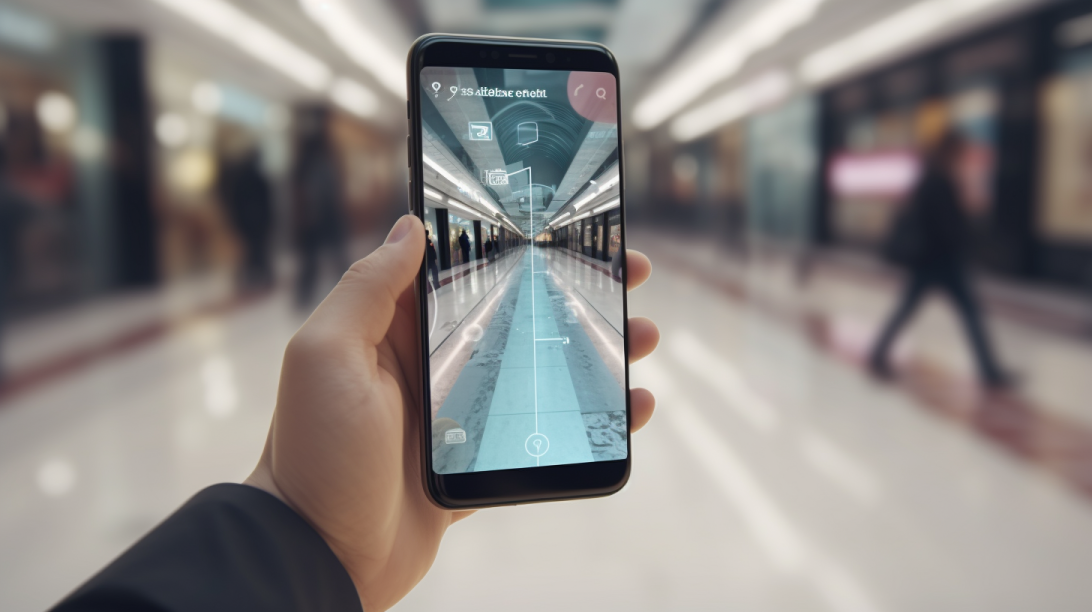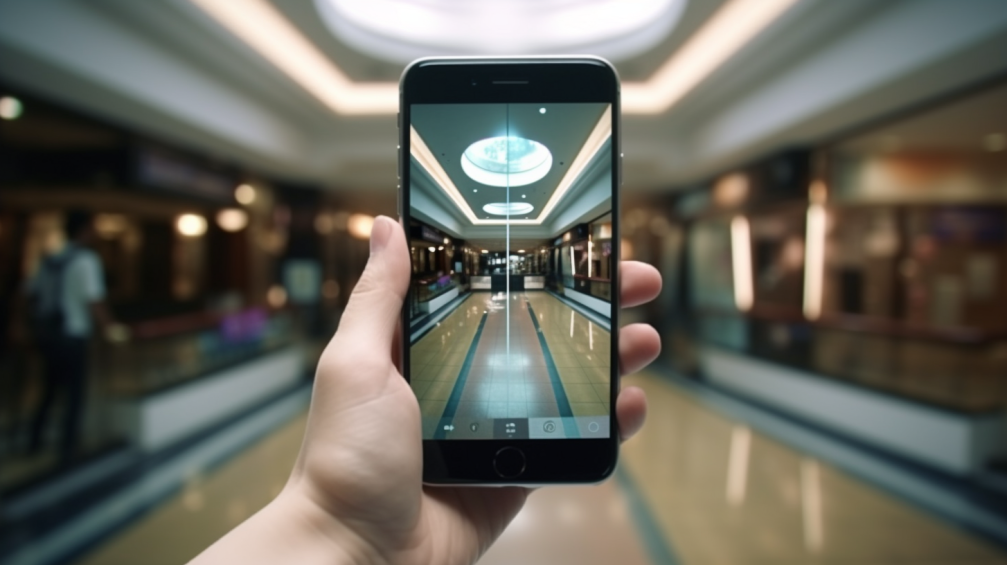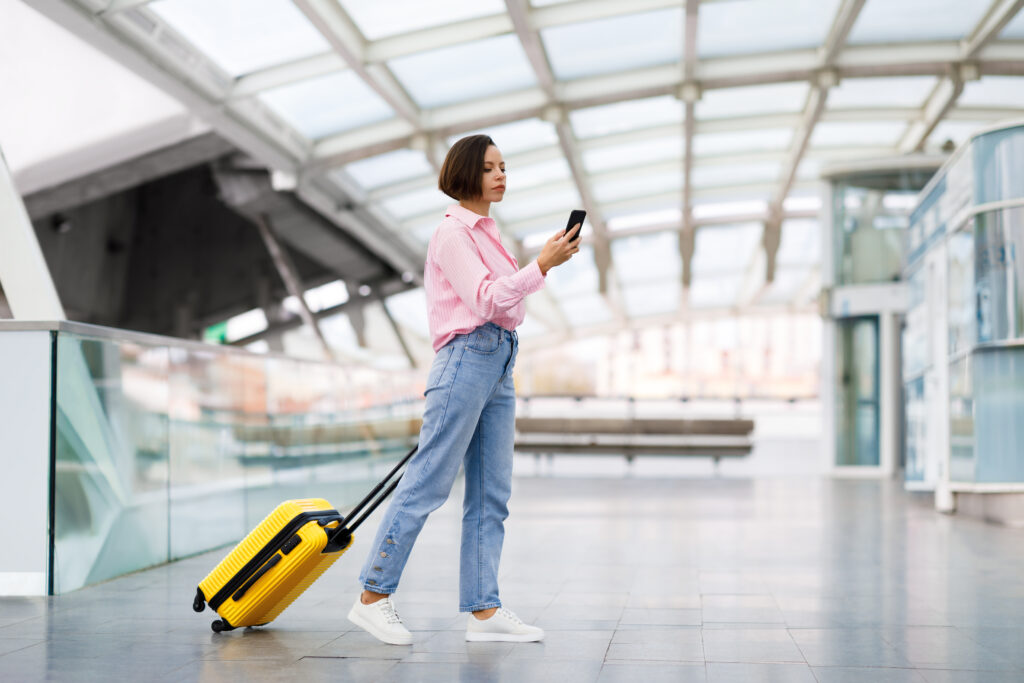
Navigate indoors with ease and precision. Discover the possibilities of AR-powered navigation systems for enhanced user experience. Learn more in this blog post!
Navigating indoors can be a challenge. Without clear signs or directions, it can be difficult to find your way around a large building like an airport or a shopping mall. But thanks to the latest technology, we can now use indoor navigation with AR, VPS, and lidar sensors to help us navigate indoors more easily.
What is Indoor Navigation with Augmented Reality?
Indoor navigation with augmented reality (AR) uses the camera and sensors of a smartphone or tablet to recognize the user’s surroundings and display digital information in real time. This information can include hints about the user’s location, directional instructions, and even detailed information about objects or places.
What is VPS?
Visual Positioning System (VPS) is a technology that enables a smartphone or tablet to recognize the user’s position and provide accurate location information. VPS uses visual markers and images to recognize the user’s position within a building and display the position in real time on the screen.
What are Lidar Sensors?
Lidar sensors are a technology that allows a device to measure distances to objects by emitting light pulses and measuring the reflections. This technology is typically used in autonomous vehicles to detect and avoid obstacles, but it can also be used in indoor navigation to more accurately determine the user’s position.

Indoor Navigation with AR, VPS, and Lidar Sensors
Indoor navigation with AR, VPS, and lidar sensors works by having the user’s smartphone or tablet recognize visual markers in the room and then calculate the user’s position in real time. This information can then be used to provide the user with accurate directional instructions and help them navigate indoors.
Benefits of Indoor Navigation with AR, VPS, and Lidar Sensors
There are several benefits that indoor navigation with AR, VPS, and lidar sensors provides. Here are some of them:
- Easy indoor navigation
With indoor navigation using AR, VPS, and Lidar sensors, users can easily navigate large buildings such as airports or shopping centers. The technology can provide users with precise directions and help them quickly and easily find important places or objects.
- Time-saving
Indoor navigation using AR, VPS, and Lidar sensors can save time by helping users navigate directly to their destination and avoid detours. This can be particularly useful when users have little time or are in a busy environment.
- Improved user experience
Indoor navigation using AR, VPS, and Lidar sensors provides an improved user experience since users are no longer reliant on signs or maps to navigate indoors. The technology offers an interactive and visual way to help users navigate their surroundings and find important places or objects.
- Accurate location tracking
Indoor navigation using AR, VPS, and Lidar sensors provides accurate location tracking since the technology can calculate the user’s position in real-time. This is particularly useful in large buildings where the user’s location is often difficult to determine.

Applications of indoor navigation using AR, VPS, and Lidar sensors
Indoor navigation using AR, VPS, and Lidar sensors can be used in various applications. Here are some examples:
Airports
Indoor navigation using AR, VPS, and Lidar sensors can help airport travelers navigate more easily and quickly find important places such as gates, check-in counters, or lounges.
Shopping centers
Indoor navigation using AR, VPS, and Lidar sensors can help shopping center visitors quickly and easily find stores or specific products.
Museums
Indoor navigation using AR, VPS, and Lidar sensors can help museum visitors better navigate the exhibit and obtain important information about exhibits.
Libraries
Of course, indoor navigation with AR, VPS, and lidar sensors can also be used in libraries. Here, it can help visitors to quickly and easily find specific books or shelves. This can be particularly useful if the library is very large or if visitors are in an area where they are not familiar. Additionally, indoor navigation with AR, VPS, and lidar sensors can help librarians keep track of books and other materials and organize them more efficiently.
How safe is the use of VPS and lidar sensors in public buildings?
The use of VPS and lidar sensors in public buildings is safe, as long as they are properly installed and maintained. However, there are concerns regarding privacy and data protection. Therefore, it is important for building operators to take appropriate security measures to protect the data and ensure the privacy of users.
Conclusion
Indoor navigation with AR, VPS, and lidar sensors offers a useful way to navigate indoors. The technology can provide users with accurate directions and help them quickly and easily find important places or objects. With the increasing prevalence of smartphones and tablets, indoor navigation with AR, VPS, and lidar sensors is likely to become even more widespread in the future.